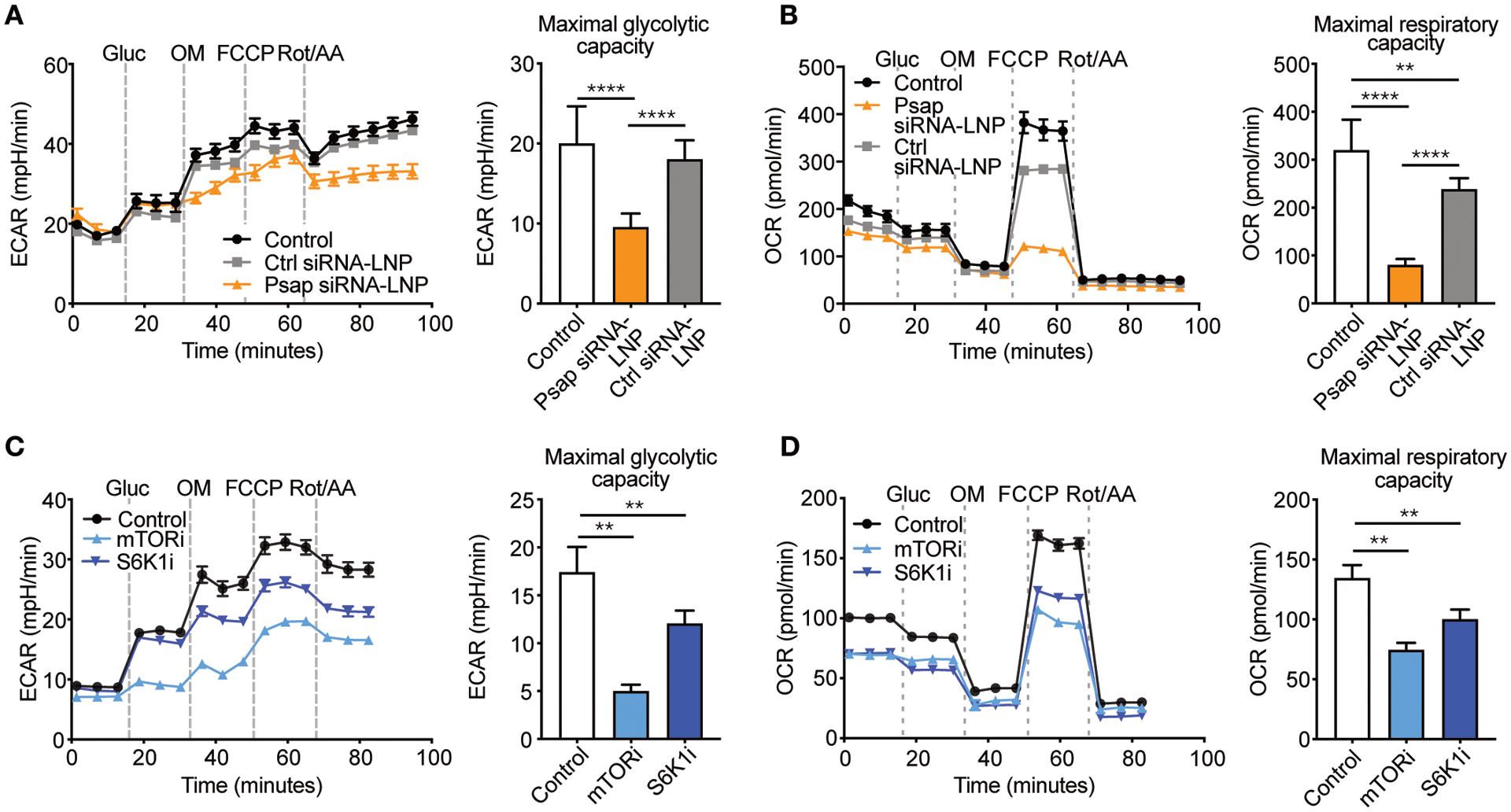Fig. 3. Psap affects immunometabolism.

(A–B) Murine bone marrow-derived macrophages were incubated with Psap small interfering RNA lipid nanoparticles (Psap siRNA-LNPs) or control (Ctrl) siRNA-LNPs and subjected to a metabolic assay (n = 10 wells/condition). Maximal glycolytic capacity (A) and maximal respiratory capacity (B) of murine bone marrow-derived macrophages. (C–D) Murine bone marrow-derived macrophages were incubated with mTOR or S6K1 inhibitors (both 20 μM) and subjected to a metabolic assay (n = 6 wells/condition). Maximal glycolytic capacity (C) and maximal respiratory capacity (D). Experiments were performed once. Line graphs are presented as mean ± SEM, bar graphs are presented as mean ± SD, non-parametric Mann-Whitney U tests were used. **P < 0.01, ****P < 0.0001. Gluc, glucose; OM, oligomycin; FCCP, carbonyl cyanide 4-(trifluoromethoxy)phenylhydrazone; Rot/AA, roterone/antimycinA; ECAR, extracellular acidification rate; OCR, oxygen consumption rate.
